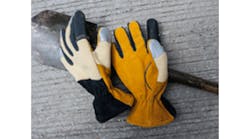Homeland Security Developing Improved Structure Glove for First Responders
Firefighters wear “structure gloves” to protect their hands. However, the structure gloves on the market today aren’t designed for the precision movements that first responders must perform, the U.S. Department of Homeland Security says.
“Firefighters have been using bulky leather structure gloves for many years,” says Greg Price, director of Responder Technologies, a division within Homeland Security’s Science and Technology Directorate. “The new tools firefighters use in the field enhance their mission, but the gloves haven’t updated with the technology.”
Price and his colleagues are seeking to change that. Price is overseeing the development of an improved, less bulky structure glove “merging the needs of firefighters with available technology and improved materials,” Homeland Security says.
Developed in partnership with NanoSonic and Shelby Specialty Gloves, the department says its improved structure firefighting glove is a combination of traditional materials and NanoSonic’s HybridShield insulated materials that are water-repellent as well as heat- and puncture-resistant.
Homeland Security’s Science and Technology Directorate asked Germantown, Tenn.-based Shelby Specialty Gloves to take the glove one step further. Homeland Security asserts that the resulting product is “a lightweight, improved-form and better-fitting structure glove.”
The project underwent multiple stages of research and testing to ensure that the selected materials were durable enough to handle field conditions. In 2012, Homeland Security shipped glove prototypes to multiple fire departments for testing. Each iteration incorporated improvements based on firefighters’ feedback.
The current version of the glove was assessed in 2013, and evaluated against five categories: ease of donning and doffing; proper fit; puncture resistance; dexterity; and thermal protection and heat dissipation.
The improved structure glove received glowing reviews, according to Homeland Security.
“The enhanced fit allows firefighters to perform even the most delicate of tasks, such as inserting a key into a lock,” Homeland Security says. “Firefighters noted heat resistance, don-and-doff ability and overall comfort and flexibility as key improvements in the improved structure glove.”
The final round of testing is underway. The department says it expects the glove to meet current National Fire Protection Association (NFPA) standards.
“If we stay on our current schedule, we hope to have the gloves NFPA-certified and available for commercial purchase by third-quarter 2014,” Price says.
